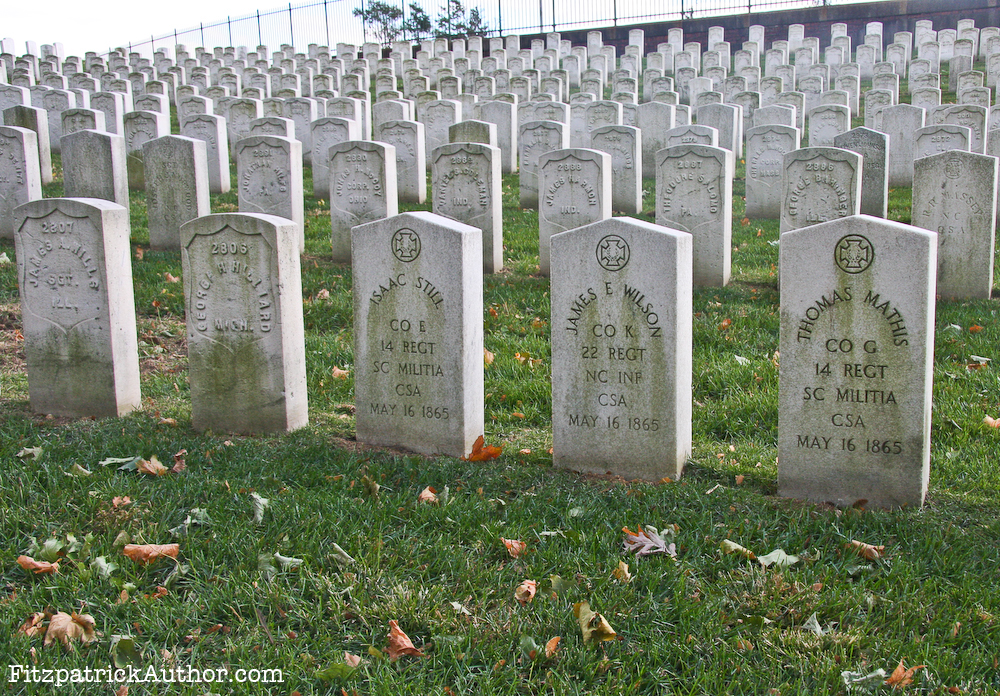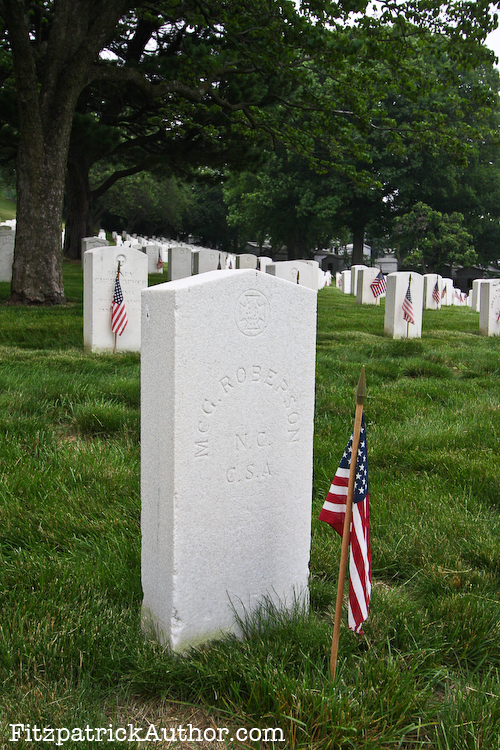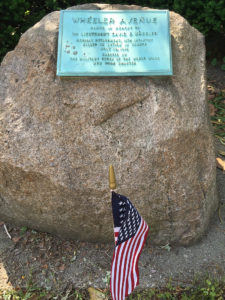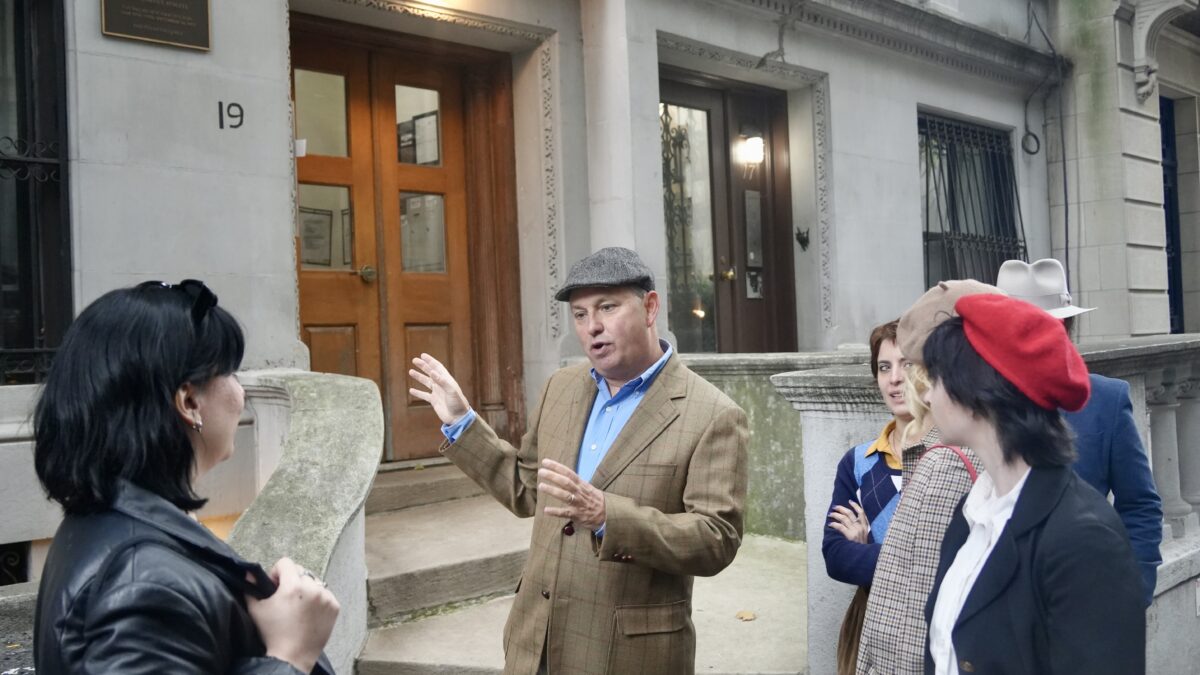
A story dominating the news this month is about how the U.S. Army has ten posts named for Confederate Generals. A second story is the only Army post in New York City, Fort Hamilton, has roads named for Robert E. Lee and Stonewall Jackson. Because I wrote the book about Governors Island and have spent untold days visiting and leading tours of New York’s greatest park, it got me to examine why this post, which the Army was on for 200 years, doesn’t have anything named for the Confederacy. Yet it played a vital role in the Civil War.
For whatever the reasons why, the War Department in WWI and WWII started naming Southern posts for Confederates, but it didn’t happen in New York Harbor. Almost every road, landmark, and important structure on Governors Island was named by the Army, which was located on the Island until 1966. For the next 30 years it was a Coast Guard base until 1996, and this branch took a hand in the tradition, such as Tampa Road for the USS Tampa, lost in 1918, and Owasco Road, for a cutter that served in the Vietnam War.
Most of the road names on Governors Island were chosen by the 16th Infantry in 1928, ten years after WWI ended. It lost thousands of men in the war, and they chose names and places carefully. Soissons Landing, where the Manhattan ferries dock, was named for the battle in Soissons, France, on July 18, 1918, in which action the 16th Regiment suffered 1,734 casualties, more than 57 percent of its total strength. There once was a beautiful bronze plaque on the Army ferry waiting room, but when it was demolished by the Trust For Governors Island, the memorial was lost. I took part in rededicating Hay Road, Enright Road, and Kimmell Road in 2017, the first three Americans killed in action in 1917 in France.
The Civil War only reached New York City in two ways: the arrival of prisoners and the treatment of wounded. Both landed on Governors Island. But the Island was part of the war even before the first shots were fired. The second half of the 19th century was a busy period at the fort, one that saw the Army remake the post as an important headquarters. Governors Island was not involved in combat but had other important functions during the Civil War (1861–1865). It was the central recruiting center on the East Coast. Fort Columbus was a jumping off point for units headed to war in the South. Seven state regiments were on the island at once—one Wisconsin unit boasted 1,200 men—and this was when Governors Island covered only 69 acres.
I had the good fortune to interview Ranger Michael Shaver on the Island, before he was sent to work on Ellis Island (also a former prison). Shaver was keen to tell me about what he calls “the last tick of the clock” before the Civil War. It happened on Governors Island. At the time he was the chief of interpretation for the National Park Service at the Governors Island National Monument.
When Fort Sumter was hanging on with Union troops trapped inside and starving, Major Robert Anderson of the 1st Artillery Regiment was the highest-ranking Union officer in Charleston. Shaver says Anderson wasn’t getting orders to surrender the fort. “He was there on the end of his rope, waiting for orders on what to do. Under the Buchanan administration the Army tried to send a resupply mission in January 1861, using the steamer Star of the West.”
The Army knew what to expect when they got to Charleston, and the reprovisioning soldiers on the steamer were turned away by South Carolina. Several weeks later, when Abraham Lincoln was sworn in, he was told the troops at the fort were starving. Lincoln decided to send another resupply mission, but this time it would provoke South Carolina even more. He needed to send another steamer with fresh Union soldiers. But where to draw them from? Baltimore, Boston, and Philadelphia were out. So the expedition to Fort Sumter was mounted again, but with no organized units available, Lincoln turned to Governors Island and the soldiers at Fort Columbus (this was the 19th century name for Fort Jay).
“However, the only troops on the island are brand-new recruits from the recruiting depot, and the officers were not infantry or artillery leaders,” Shaver points out. “These officers were on the island not planning to lead anyone, especially on a risky journey to Charleston.” On April 6 the steamer left Governors Island with approximately 200 soldiers. “The minute that boat leaves, there’s nothing that can be done to stop the war,” he says. “When that boat arrives in Charleston, it was seen as a provocative act. (Lincoln) is provoking the South into firing the first shot.”
We know what happens next. On April 12 Confederate General P.G.T. Beauregard ordered the bombardment of Fort Sumter. The following day, after 34 hours of bombardment, Major Anderson and 86 of his men surrendered the fort. The relief ship returned to New York with Anderson aboard, carrying the fort’s 33-star Old Glory home.
“A few days later 100,000 gathered in Union Square Park to see Anderson and the flag,” Shaver says. “The soldiers returned to Fort Columbus and Fort Hamilton. The war was on.”
Castle Williams was put to use as a military prison for captured Confederate enlisted men and Union deserters. More than 600 men were crammed into the structure and forced to live in dreadfully unsanitary conditions. Many suffered from sickness and disease in the open-air facility, which was not covered or protected from the elements. The conditions prompted Orderly Sergeant Andrew Norman of the 7th Regiment, North Carolina Volunteers, to send a desperate letter to U.S. Secretary of War Simon Cameron, begging for action. His fellow soldiers were dying from measles, typhoid fever, and pneumonia.

“Today 115 of the 630 are confined by disease which threatens to prostrate us all. Four of our men have died within the past five days and many others are dangerously ill,” Orderly Sergeant Andrew Norman, Sept. 30, 1861.
“[The prisoners] are crowded in an ill-ventilated building which has always been an unhealthy one when occupied by large bodies of men. There are no conveniences for cooking except in the open air, no means of heating the lower tier of the gun rooms and no privies within the area. As winter approaches I cannot see how these 630 men can be taken care of under the above circumstances,” Dr. William J. Sloan, U.S. Army medical director, 1861.
Being interred on Governors Island was deadly for scores of prisoners, who died of disease and exposure. They were buried on Governors Island in the post cemetery, which was relocated in 1878 when 550 graves were moved. Today more than 500 Confederates are interred in Brooklyn, in Cypress Hills National Cemetery, the only U.S. burial ground in the five boroughs. Their graves are easy to distinguish by the points on the tops of the gravestones. All of the Confederate dead from Governors Island are interred in one spot.
Other ties to the Civil War leaders on the Island: West Point graduates U.S. Grant and William T. Sherman began their Army careers here. Grant was on the Island before he was sent to California as a young officer (both his son and grandson also served on Governors Island). In 1840 William Tecumseh Sherman, a veteran of the Second Seminole War, was stationed on the post. He of course became one of the Union’s most successful field generals in the Civil War. “I am tired and sick of war. Its glory is all moonshine. It is only those who have neither fired a shot nor heard the shrieks and groans of the wounded who cry aloud for blood, for vengeance, for desolation. War is hell,” Gen. William Tecumseh Sherman wrote.

